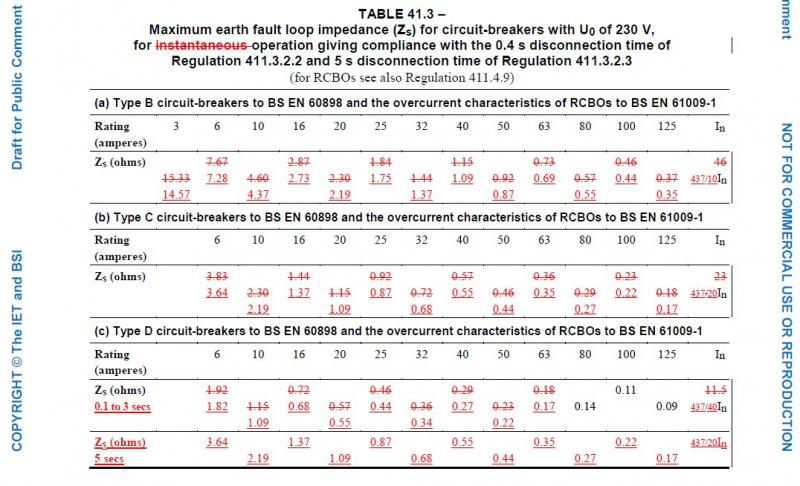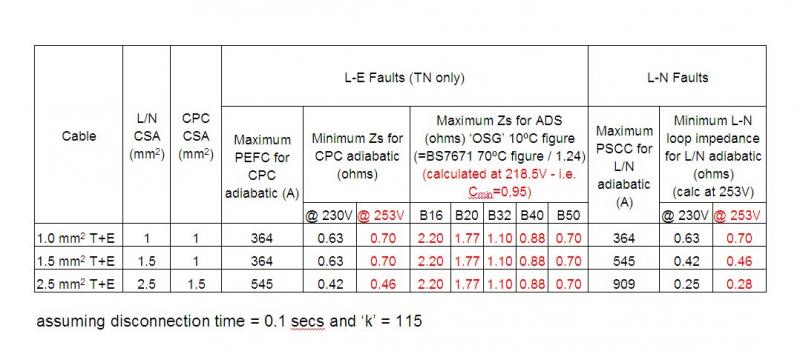John, It may be, but I am basing my calculation on a formula and discussion in Electrical Installation Calculations (Coates and Jenkins) Fourth Edition - page 114 and 115. ... Assuming that the definite minimum time is 0.01s , the minimum value of Zs at the MCB is given by: ....
Ah - so, yes, you're using the correct formula, but you are assuming a disconnection time of 0.01 second (hence, as you say, the square root of that is 0.1). I had thought that you were (like me) using a disconnection time of 0.1 sec, but had omitted to take the square root of it.
I have based all my calculations on a disconnection time of
0.1 sec (of which the square root is, as I said, 0.316) - which seems to be the conservative figure which is usually used for such calculations. As we have discussed in this thread, there is a paucity of readily available details of precise disconnection times of MCBs. Whilst I agree that is quite possible that the disconnection time would be 0.01 secs (or maybe even lower), the standard published curves (e.g. those in BS7671) stop at 0.1 sec - which I presume is the reason why that is the figure commonly used for such calculations.
Whatever, what you seem to be overlooking is that (as is apparent from the fact that the calculated Zs is
smaller with t=0.01 than with t=0.1) what you (and I) have calculated is the
minimum Zs to ensure that the conductor had adequate protection. You asked what one would do if, with your calculated Zs of 0.22Ω, the Ze alone was 0.20Ω. However (contrary to what I think you were implying), given that your 0.22Ω is the
minimum, from the point of view of conductor protection, any Zs greater than 0.22Ω (even much higher than 0.22Ω

would be fine. Of course, that's only half of the story. As well as this minimum Zs for conductor protection, there is also a
maximum Zs that will achieve the required disconnection times. To satisfy both conductor protection and disconnection times, Zs has to between those minimum and maximum values (as illustrated in my tabulations above).
Kind Regards, John



